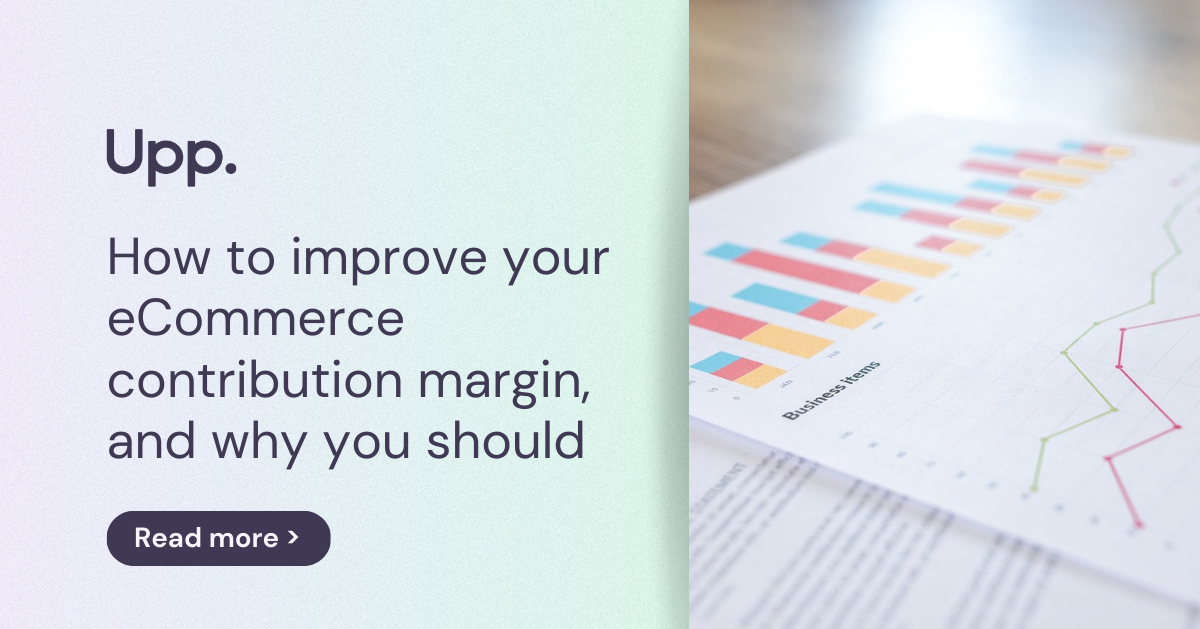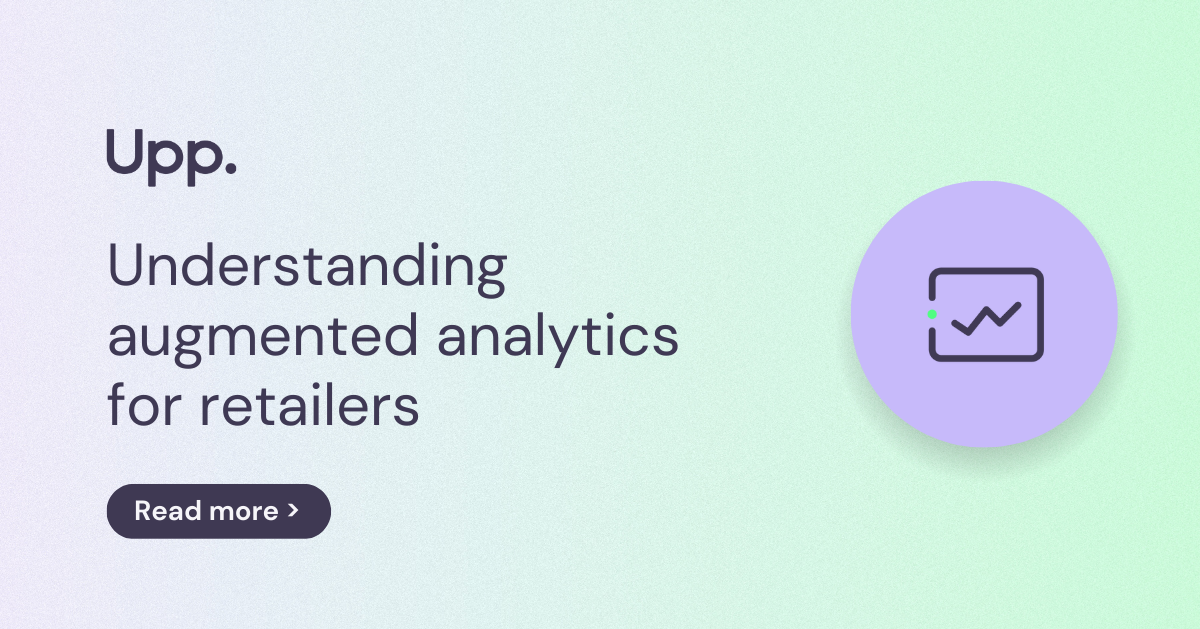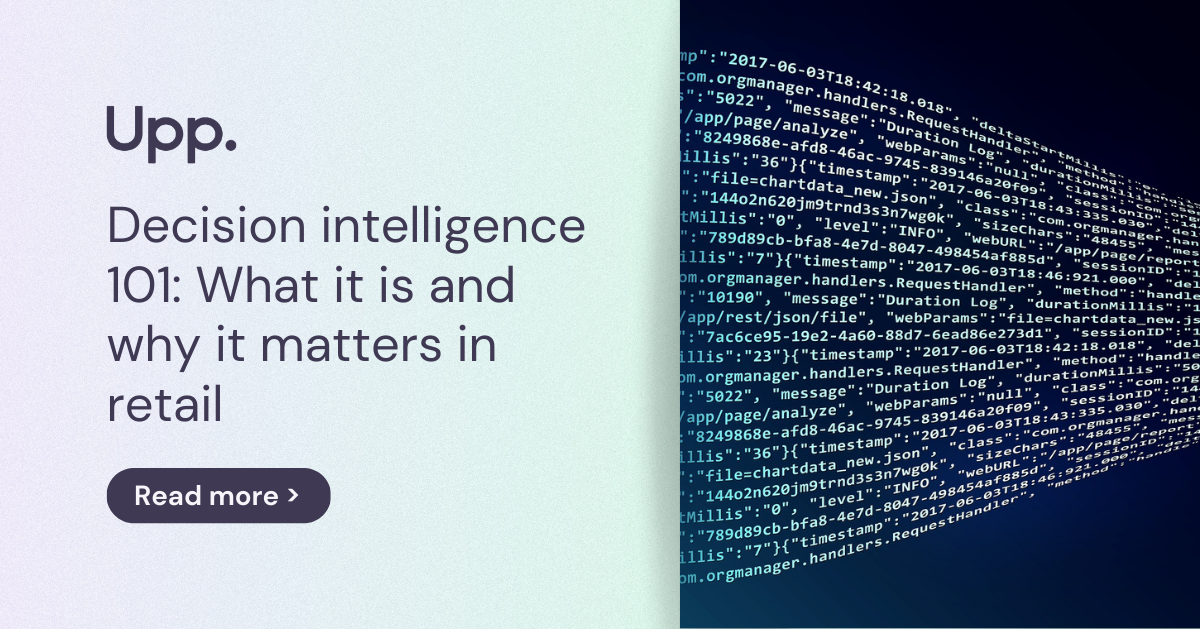Trusting AI: How Retailers Are Using Decision Intelligence In Advertising
What is decision intelligence?
Decision intelligence is built on AI and machine learning, which is built on data. According to Forbes, “Decision intelligence […] helps support, augment and automate business decisions by linking data with decisions and outcomes”.
There are three layers to decision intelligence. The first is similar to a Google Analytics report showing website visitors. It shows you the aggregated data to help you make a decision, but doesn’t do any more work in the decision-making process.
The second goes a bit further, decision augmentation is similar to business intelligence tools like Power BI. It gives you the data but also provides recommendations for how you could alter your marketing strategy to get better results.
The third, and most game-changing for retailers, is decision automation. This is where decision intelligence software not only sorts and analyses your data but also takes action and makes automated decisions aligned with your goals.
The thought of technology automatically making decisions for your business might sound scary, but in the case of eCommerce advertising, it’s a game changer.
Why decision intelligence is so significant for eCommerce advertising
Whilst decision intelligence software can go beyond advertising – it can be used for stock management, finance systems and more – advertising remains one of the largest costs on a retailer’s P&L.
The platforms that eCommerce brands are using right now to advertise their stores (Google Shopping Ads, Meta Ads, Amazon Ads, Apple Ads) are, ultimately, designed to benefit the technology companies that built them, not your retail business.
Google Ads, for example, is built on machine learning algorithms that learn from the data they’re fed. Which, for most brands, is data from Google’s platform, their eCommerce software (Magento, WooCommerce, Shopify) and potentially some additional data from elsewhere in the business.
But the problem is that all retailers are using the same tools, and therefore have no competitive advantage. Also, Google is optimising towards what makes it the most money, i.e. which products produce the best conversions and the best CPCs.
Google isn’t the real problem – it’s incredibly powerful, but it’s up to you to make it more effective for your business.
Like any machine learning software, it’s based on the data you feed it. eCommerce brands can use decision intelligence tools to connect, analyse and interpret data from sales, finance, warehousing, customer and operations departments. From there, you can feed this quality, intelligent data into Google Shopping and teach Google to learn from your data and work towards your goals, not just its own.
Decision intelligence is effectively having a ‘super team’ in your business with infinite knowledge and processing power, with the ability to seek the best decision outcome based on the business’ targets, and action it instantly.
It’s easy to see why this capability is so valuable to retailers in advertising when so much ad spend results in zero return (40% on average). The optimisations needed are endless, you have thousands of products to manage, and it’s impossible to keep up with what customers are buying.
How can eCommerce marketers improve advertising performance using decision intelligence?
Improving advertising performance is a constant battle. The tech giants continue to launch new features that marketing teams have to keep up with, consumer spending is in flux, and competition is getting tougher every day.
Advertising is an area where human teams alone can’t keep up with the infinite work. Here we look at a couple of examples where eCommerce marketers have begun to use decision intelligence to improve their advertising performance.
Example One: SKU-Level Google Shopping Optimisation
Even though you might have a collection of similar products that it makes sense to group on your store – it doesn’t always work on Google Shopping. Your products all have different price points, different manufacturing costs, and different shipping costs – how can you keep on top of contribution margins and true ROAS if they’re all in one campaign?
Due to the scale of data that decision intelligence software can process simultaneously, decision intelligence allows you to focus on SKU-level optimisation, rather than campaign-level optimisation.
Upp.AI decision intelligence for retail, for example, can take into account the contribution margin needed for every SKU, to calculate the true ROAS needed, and groups products into campaigns based on how likely they are to sell, not on how similar the products are.
Decision intelligence optimises each campaign based on how likely the SKU is to sell, and moves SKUs in and out of those campaigns in line with real-time supply and demand.
It’s impossible for a human team to do that effectively for every product, all the time.
Example Two: Never Missing Unexpected Trends
Unlike us, technology tools don’t need rest or sleep, so they never stop working or looking for opportunities.
Decision intelligence software is excellent at seeking out, responding to and acting on both expected and unexpected trends and peaks/dips in consumer demand.
Take this real-life example, from a global marketplace using Upp.AI decision intelligence to manage their Google Shopping campaigns.
During the UK heatwave in 2022, a global marketplace saw an 89% increase in revenue, and a P&L improvement of 113%, with ROAS hitting 18.78.
This is expected, you might think, as demand naturally soars for products like fans, ice packs and aircon units when there are unusual weather events.
Indeed, they did sell plenty of fans and aircon units, and these products drove their GMV (Gross Merchandise Value) achievement, but the CPC was high for those as the market knew they’d be in demand so many other retailers increased their bids.
What drove their 113% P&L improvement wasn’t the expected heatwave products, it was the unexpected. In the case of this marketplace, it was wardrobes that drove up their profitability.
Why? The CPC was, understandably, incredibly low, but there was an odd spike in demand for wardrobes and they (thanks to their decision intelligence tool – Upp.AI) capitalised on it.
Only a decision intelligence tool could have spotted and acted on this trend so quickly – without any human intervention.
Not all decisions should be automated
Some marketing touchpoints are too crucial not to have human involvement. Strategy is an obvious one, you’d never rely on a machine to come up with your go-to-market or product launch strategy. These require creative thinking, emotional intelligence and considering wider business politics and/or objectives.
Whilst there’s a place for GenAI tools to be used in content creation, any touchpoint in your customer journey where you need to make a human connection or engage in conversation should always have human involvement as well.
All your blog content, email comms and product descriptions will all be hugely enhanced if they’re written in thoughtful, human language designed to engage, influence and convert your buyers.
Let technology do the data heavy lifting, analytics and advertising decisioning, and direct your team to focus on brand loyalty and building meaningful customer connections.
Trust us (and AI)…decision intelligence is the only way to start winning
Decision intelligence is built on AI and machine learning, which is built on data. If you trust that your own sales, financial, warehousing and marketing data is right for your business, then you can trust that your decision intelligence tool will also be right for your business.
Decision intelligence is essentially a hive mind of your business data, with the power to analyse, dissect and act of its own accord, knowing what the whole business needs to achieve and doing all it can to achieve those goals.
Think about what your team could achieve if they were powered by a decision intelligence tool engineered to make your marketing department and, ultimately, your business win.
Start using decision intelligence as part of your marketing stack today. It’s simple to adopt and our team of retail AI technology experts will walk you through everything you need to know. Speak to the Upp. team today.



